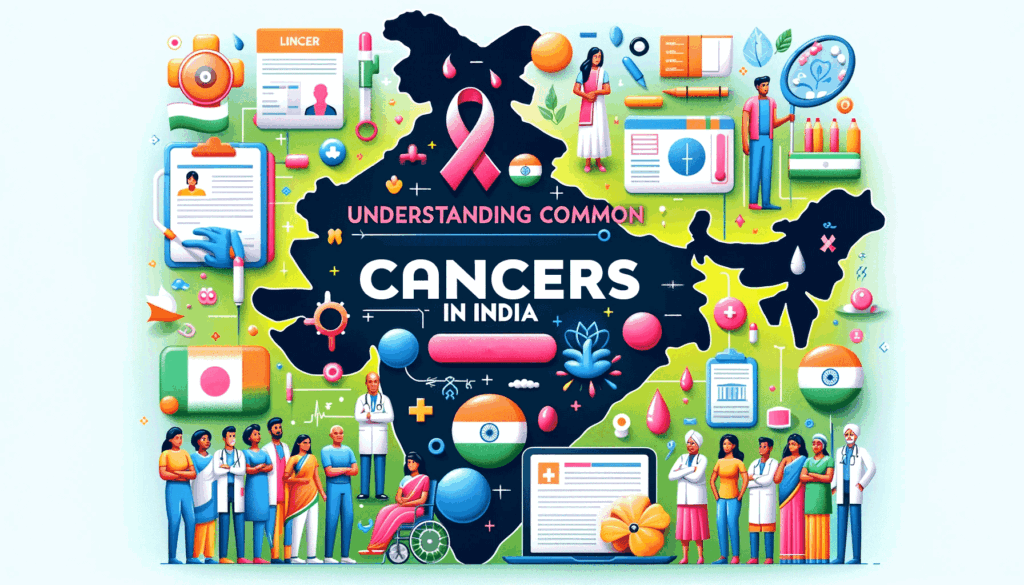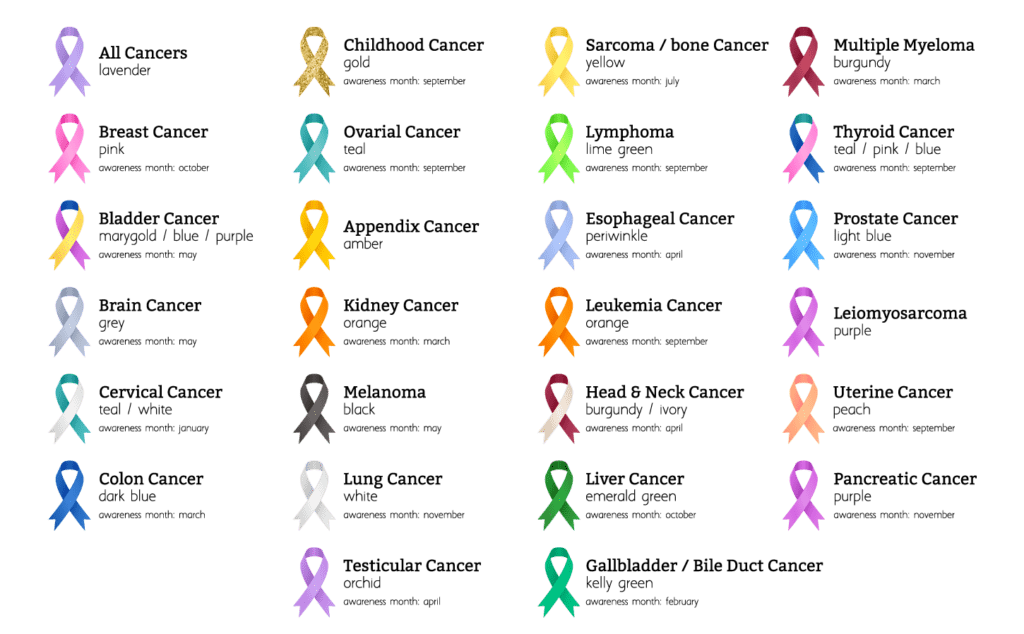
Cancer, a disease characterized by the uncontrolled growth and spread of abnormal cells, is a major public health concern globally. In India, the cancer landscape presents unique challenges and patterns, reflecting both lifestyle and genetic factors.
The Burden of Cancer in India
According to the Indian Council of Medical Research (ICMR), India had an estimated 1.39 million new cancer cases in 2020. The cancer incidence rate in India is lower compared to many Western countries, but the mortality rate is significantly higher due to late diagnosis and limited access to treatment facilities. The most common cancers in India include breast cancer, oral cancer, cervical cancer, lung cancer, and stomach cancer.

Breast cancer is the most common cancer among women in India, contributing to a significant portion of the cancer burden. The National Cancer Registry Programme report (2020) indicated that breast cancer accounts for 14% of all cancers in India.
- Ribbon Color: Pink
- Awareness Month: October
Early detection through self-examination and regular mammograms can significantly improve breast cancer outcomes. Despite growing awareness, societal stigma and lack of access to healthcare facilities often lead to delayed diagnosis.
Oral cancer, primarily linked to tobacco use (both smoked and smokeless), is more prevalent in India compared to other parts of the world. It accounts for around 30% of all cancers in the country.
- Ribbon Color: Burgundy and Ivory
- Awareness Month: April
The high prevalence of oral cancer is attributed to the widespread use of tobacco products like gutka, bidi, and khaini. Public health campaigns focusing on reducing tobacco consumption are crucial in combating this cancer.
Cervical cancer is the second most common cancer among women in India. Human Papillomavirus (HPV) infection is the most significant risk factor for cervical cancer.
- Ribbon Color: Teal and White
- Awareness Month: January
Despite being a preventable cancer through vaccination and early detection via Pap smears, cervical cancer remains prevalent due to lack of awareness and limited access to screening and vaccination programs.
4. Lung Cancer
Lung cancer, predominantly caused by smoking, is on the rise in India, especially among men. It is one of the leading causes of cancer-related deaths in the country.
- Ribbon Color: White
- Awareness Month: November
Public health initiatives aimed at reducing smoking are vital in addressing the burden of lung cancer. Additionally, air pollution has emerged as a significant risk factor, necessitating environmental interventions.
5. Stomach Cancer
Stomach cancer, though not as common as other types, still affects a significant number of Indians. Risk factors include Helicobacter pylori infection, dietary habits, and smoking.
- Ribbon Color: Periwinkle
- Awareness Month: November
Early diagnosis remains challenging due to the non-specific nature of symptoms in the early stages of the disease.
Key Data Points and Trends
- Age Factor: Cancer in India is seen across a wide age range, but there is a notable increase in incidence rates after the age of 50.
- Gender Disparity: Certain cancers like breast and cervical cancer are more common in women, while men are more prone to oral and lung cancer.
- Geographical Variation: The prevalence of specific cancer types varies significantly across different regions in India, reflecting lifestyle and environmental factors.
- Late Diagnosis: Approximately 70% of cancer cases in India are diagnosed at an advanced stage, reducing survival rates.
- Economic Impact: The economic burden of cancer is substantial, with many patients facing financial hardship due to the high cost of treatment.
Raising Awareness and Prevention Strategies
Awareness and education are critical components in the fight against cancer. Understanding the significance of early detection and lifestyle modifications can lead to a substantial reduction in cancer incidence and mortality. Some key strategies include:
- Tobacco Control: Given the strong link between tobacco use and cancers like oral and lung cancer, robust tobacco control policies and public education campaigns are essential.
- Vaccination Programs: For cervical cancer, widespread HPV vaccination can significantly reduce incidence rates.
- Screening and Early Detection: Regular screenings for breast, cervical, and oral cancers can lead to early detection and better treatment outcomes.
- Public Education: Dispelling myths and educating the public about cancer symptoms, risk factors, and the importance of early consultation can improve early detection rates.
- Access to Healthcare: Improving access to affordable and quality healthcare across the country is crucial in managing the cancer burden.
Conclusion
The battle against cancer in India is multifaceted, involving public health policies, awareness campaigns, and individual actions. Understanding the common cancers, their ribbon colors, and awareness months is a step towards greater awareness and action. As a society, it is imperative to break down the barriers of stigma and silence surrounding cancer, encouraging open discussions, regular health check-ups, and lifestyle changes to reduce the risk. With concerted efforts from the government, healthcare providers, and the public, we can make significant strides in reducing the burden of cancer in India.
References
- Indian Council of Medical Research (ICMR)
- National Cancer Registry Programme Report 2020
- World Health Organization (WHO) Cancer Reports
Let’s remember, every ribbon color we wear and every awareness month we observe brings us closer to a world where cancer no longer poses a major threat to our lives and well-being.
For More information, Check the cancer ribbon colour table below.

| Cancer Ribbon Colors and Awareness Months | ||
|---|---|---|
| Cancer | Ribbon | Awareness Month |
| Appendix cancer | Amber | |
| Bladder cancer | Yellow, purple, and navy blue | May |
| Bone cancer | Yellow | July |
| Bone marrow transplant | Green | |
| Brain cancer | Gray | May |
| Breast cancer | Pink | |
| Breast cancer (inflammatory) | Hot pink | |
| Breast cancer (hereditary) | Teal and pink | |
| Breast cancer with gynecologic cancers | Teal and pink | |
| Breast cancer (metastatic) | Teal, pink, and green | |
| Breast cancer (in men) | Pink and blue | October |
| Cancer survivor | Lavender | June |
| Carcinoid syndrome | Black and white zebra stripes | November |
| Caregiver | Purple | November |
| Cervical cancer | Teal and white | January |
| Childhood cancer | Gold | September |
| Colon cancer | Dark blue | March |
| Colorectal cancer | Dark blue | March |
| Endometrial cancer | Peach | |
| Esophageal cancer | Light purple/periwinkle | April |
| Ewing’s sarcoma | Yellow | July |
| Gallbladder/bile duct cancer | Green | February |
| Gastric (stomach) cancer | Periwinkle blue | November |
| Glioblastoma | Gray | |
| Gynecological cancer | Purple | September |
| Head and neck cancer | Burgundy and ivory, or red and white | April |
| Hodgkin lymphoma | Violet | September |
| Kidney cancer (renal cell carcinoma) | Green or orange | March |
| Laryngeal cancer | Burgundy and white | |
| Leiomyosarcoma | Purple | July |
| Leukemia | Orange | September |
| Liver cancer | Emerald or jade green | October |
| Lung cancer | Pearl, clear, or white | November |
| Lymphedema | Light blue | |
| Lymphoma (non-Hodgkin) | Lime green | September |
| Melanoma | Black | May |
| Mesothelioma | Pearl | |
| Myeloma | Burgundy | March |
| Myeloproliferative diseases | Orange and red | |
| Neuroendocrine cancers | Black and white zebra-stripes | November |
| Oral cancer | Burgundy and white | April |
| Osteosarcoma | Yellow | July |
| Ovarian cancer | Teal | September |
| Pancreatic cancer | Purple | November |
| Pharyngeal cancer | Burgundy and white | April |
| Prostate cancer | Light blue | September |
| Rectal cancer | Blue | March |
| Retinoblastoma | White | |
| Sarcoma | Yellow | July |
| Skin cancer | Black | May |
| Skin cancer (squamous cell carcinoma) | Red and white | May |
| Small intestine cancer | Periwinkle blue | |
| Testicular cancer | Purple (orchid) | April |
| Throat cancer | Burgundy and white | |
| Thyroid cancer | Blue, pink, and teal | September |
| Uterine cancer | Peach | September |
| Waldenstrom’s macroglobulinemia | Pearl | |

